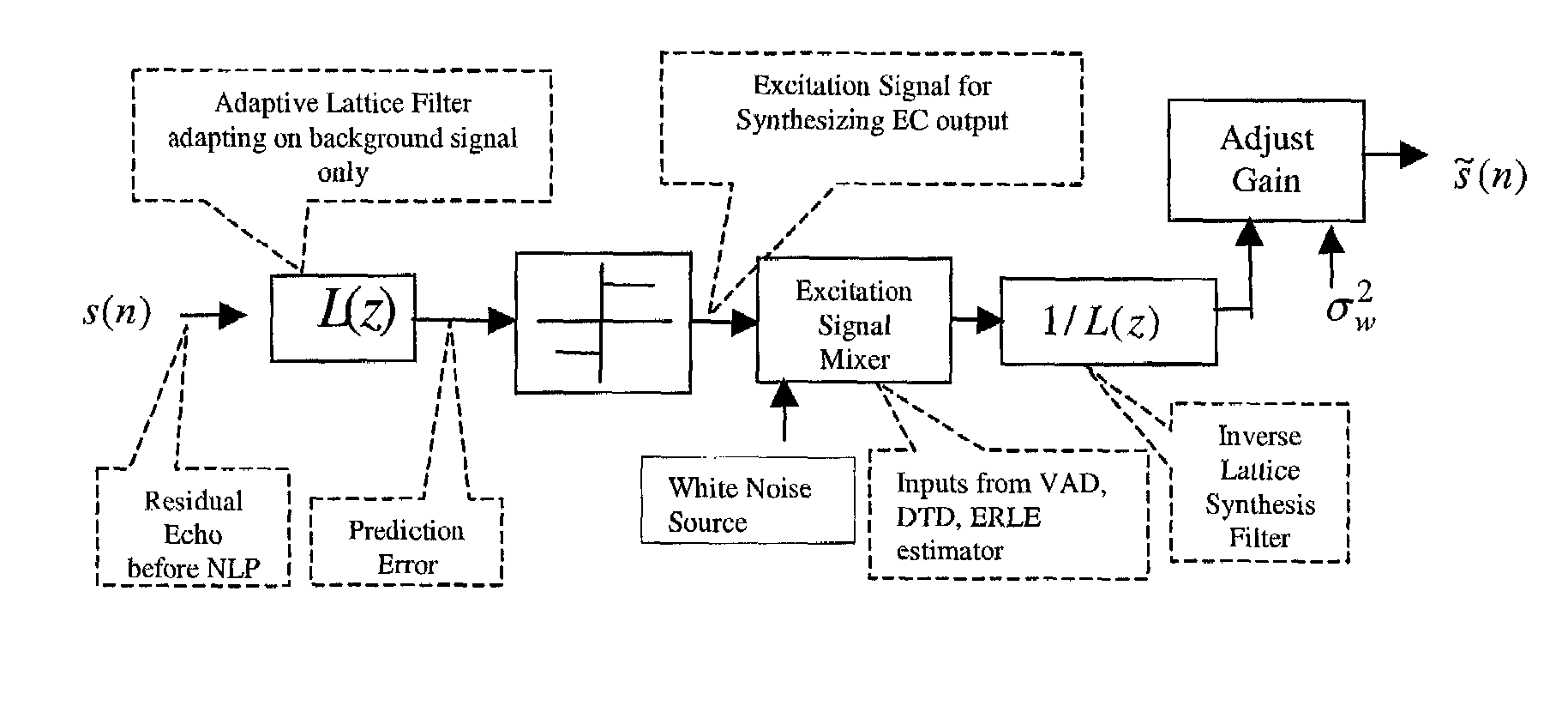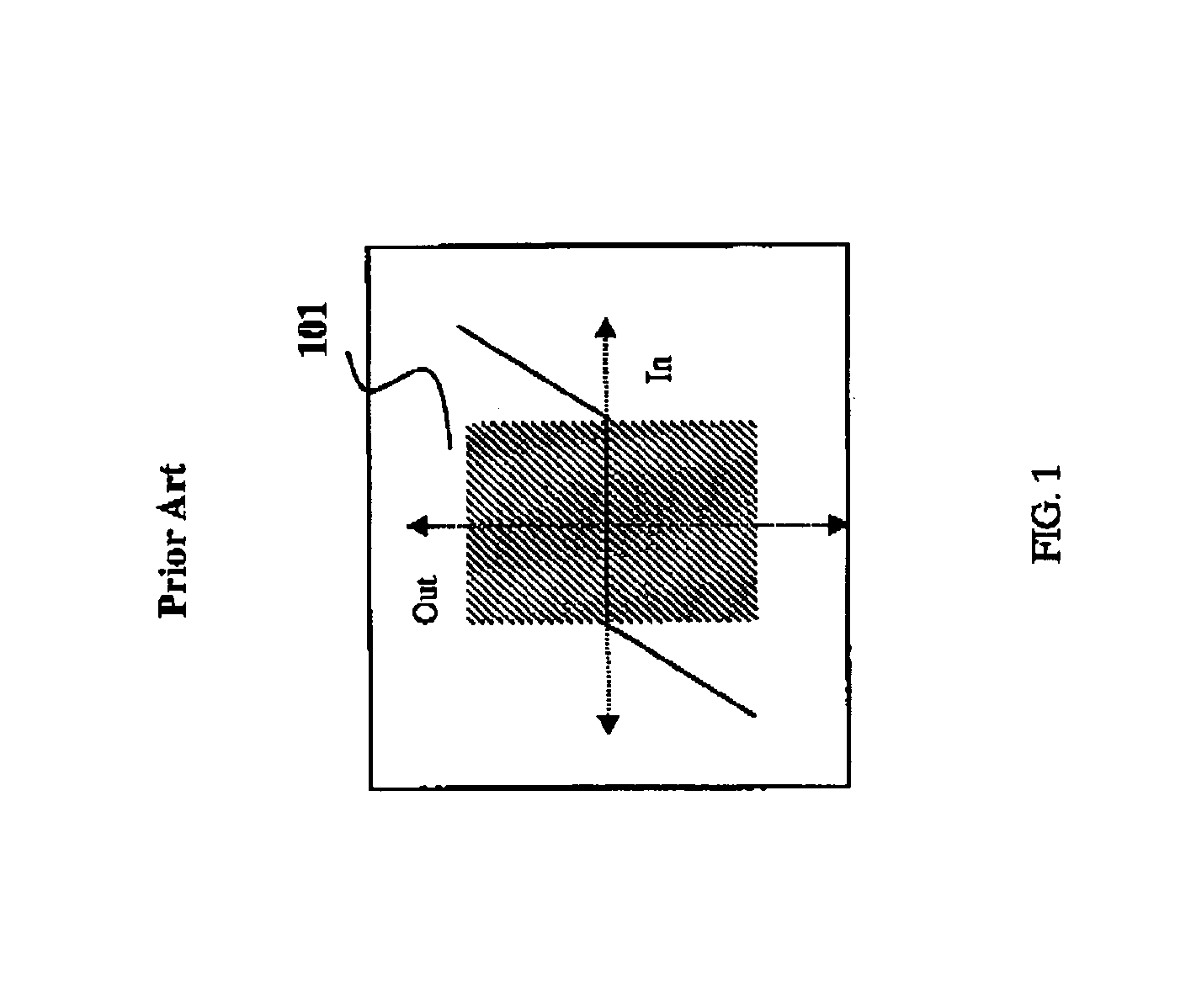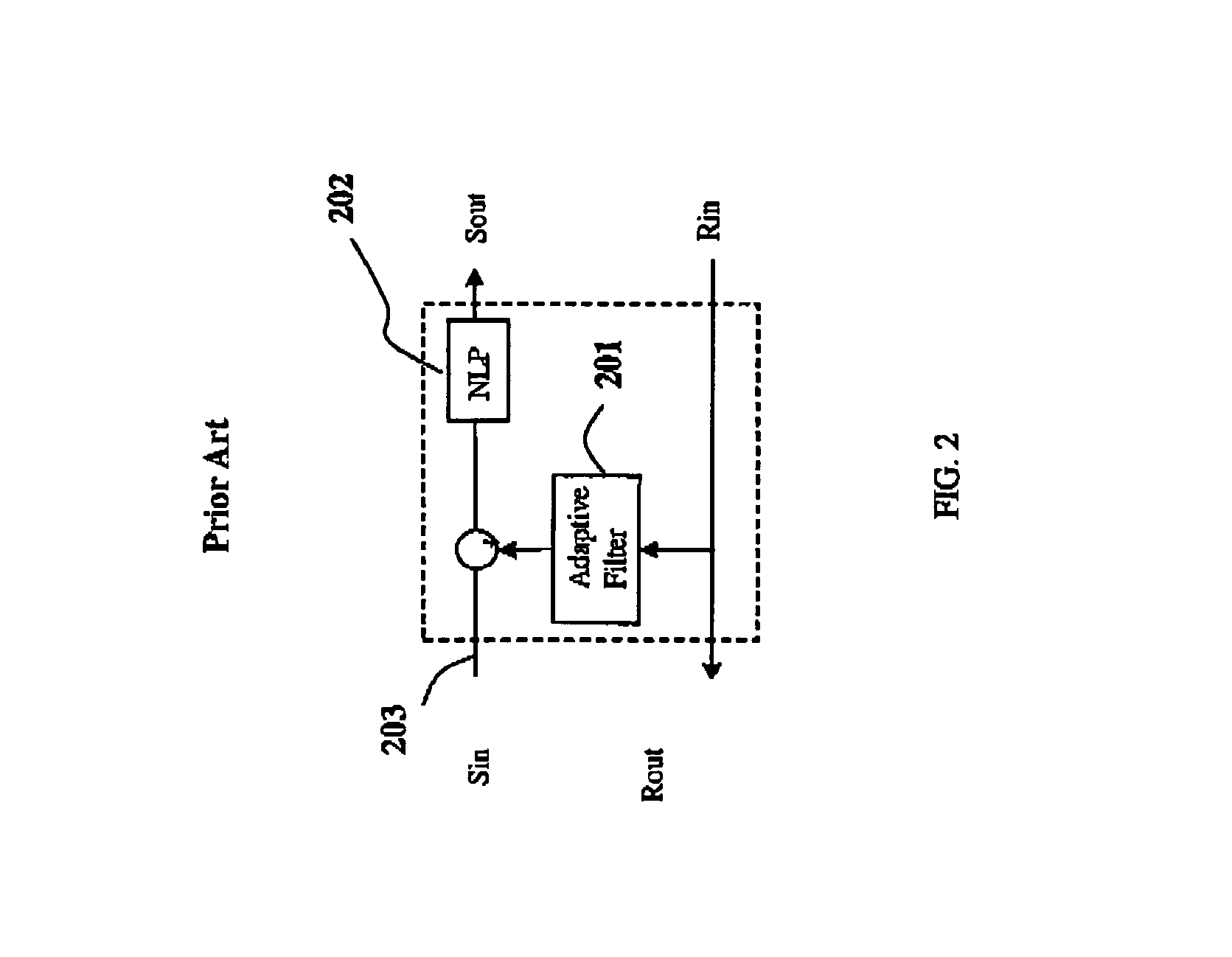Methods and apparatus for echo cancellation using an adaptive lattice based non-linear processor
a non-linear processor and adaptive technology, applied in the field of speech signal management, can solve the problems of inability to completely remove the echoes of speech signals, inconvenient use, and excessive energy suppression, and achieve the effect of reducing the number of echo cancellations
- Summary
- Abstract
- Description
- Claims
- Application Information
AI Technical Summary
Problems solved by technology
Method used
Image
Examples
Embodiment Construction
[0020]FIG. 3 illustrates a concept of an exemplary embodiment of the present invention. It is a block diagram showing whitening of a speech signal s(n). In FIG. 3, input speech signal s(n) at line 301 is filtered by filter L(z) 302 and s′(n) at line 303 is a prediction error signal which is essentially whiter than the input. The input speech signal s(n) can be described in the following equation:
s(n)=re(n)+w(n)
where re(n) is residual echo after cancellation and w(n) is the correlated near-end background noise signal and s(n) is the sum of the two. The optimal filter L(z) is computed during portions of background noise and the prediction error signal s′(n) is not completely white in general, and how much the prediction error signal is whitened depends on the order of L(z) used. An optimal filter L(z) essentially models the spectral envelope of its input signal.
[0021]In obtaining the optimal coefficients for a filter L(z), an exemplary embodiment of the present invention employs the G...
PUM
 Login to View More
Login to View More Abstract
Description
Claims
Application Information
 Login to View More
Login to View More - R&D
- Intellectual Property
- Life Sciences
- Materials
- Tech Scout
- Unparalleled Data Quality
- Higher Quality Content
- 60% Fewer Hallucinations
Browse by: Latest US Patents, China's latest patents, Technical Efficacy Thesaurus, Application Domain, Technology Topic, Popular Technical Reports.
© 2025 PatSnap. All rights reserved.Legal|Privacy policy|Modern Slavery Act Transparency Statement|Sitemap|About US| Contact US: help@patsnap.com



